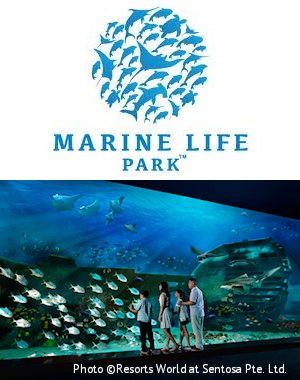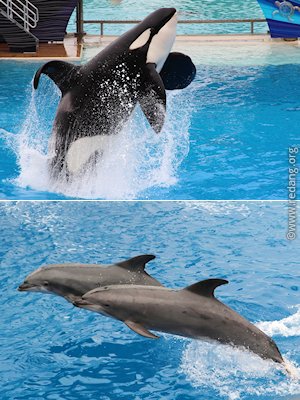Redang weather forecast
- Check sea and weather conditions before going. Any rough sea warnings for Terengganu will apply to Redang.
I've just been notified that Amannaggapa Resort located at Teluk Kalong Kecil is now known as Wisana Redang... again. The name change came into effect in April 2013. In 2010, Wisana was leased to new management who re-branded it as Amannaggapa. That lease has expired and so the resort has now gone back to the previous management who has now renamed it Wisana Redang Resort again. For bookings and further information, please refer to their new website, temporarily located at Wisana's Facebook page.
The recent skirmishes between Malaysian security forces and the Sulu gunmen who invaded Lahad Datu and Semporna in Sabah, Malaysia may have made potential visitors nervous about visiting Sabah, in particular, divers and snorkellers heading for the islands of Mabul, Kapalai and Sipadan who leave for the islands via Semporna jetty. This is because the jetty is adjacent to Kampung Simunul, where 6 policemen and 6 gunmen were killed in a shootout on 2 March.
The Sabah Tourism Board has clarified that business goes on as usual at these tourist islands as well as the islands of Mataking, Pom Pom, Pandanan, Lankayan and Selingan Turtle Island. Since 2000, after the Abu Sayyaf kidnapping incident on Sipadan, the Malaysian government has stationed armed security personnel on many of these islands, and beefed up their numbers in the light of the recent incident.
With the increase in security personnel on these islands and the Malaysian security forces successfully containing, clearing and securing many of the areas where the gunmen are suspected to be hiding, including Kampung Simunul, the islands and other tourist areas in Sabah should be safe to visit. Do check out the travel advisories from the Sabah Tourism Board for the latest news, as well as with your dive and resort operators.
For those who prefer to be further away from all that action but still need their scuba fix after the long layoff due to monsoon season, there's always Redang, Lang Tengah, Perhentian, Tenggol, Tioman and Aur...
It's late February and Redang visiting season 2013 is about to begin. For most resorts, that means opening on 1 March. Many visitors are probably already planning their next visit over school vacation breaks or long weekend holidays (of which there are quite a number this year in both Malaysia and Singapore). With this first post of the year coming out so late, I hope you all had a good year end vacation and a blessed start this New Year 2013 with everything going swimmingly well! Even when things are not, we can always count our blessings and remain cheerful, hopeful and thankful.
For example, we can be thankful that doomsday prophets were proven wrong yet again on the morning of 22 Dec 2012, adding to the carcasses of failed past predictions. While most regular folks never really believed these Mayan and i-Ching prophecies, I'm sure their proponents managed to sow a little doubt in some people's minds. What is less doubtful is Hollywood coming up with a sequel to "2012" once doomsday prophets agree on the next dooms date.
Coming down to earth literally, citizens of planet Earth can be truly thankful that a space rock named 2012 DA14 passed near enough to give astronomy fans a good show but not near enough to wet their pants. If it had arrived just 15 minutes earlier, we might not even have a Redang visiting season 2013 to look forward to. The Chelyabinsk meteor show over Russian skies demonstrated on a much smaller scale what might have happened had DA14 decided to make Earth a rest stop on its planetary travels. Of course, now that asteroids have gotten the world's attention, the beaches on Redang are as good a place to look up, stargaze and wonder how many more space rocks are coming our direction. And as we do so, we can also be thankful that for once in our history, mankind has the technology to give us advance warning of asteroids large enough to send us the way of the dinosaurs. While we may not yet have the technology to prevent contact (unless you believe all we need is a bunch of fearless macho oil drillers led by a Bruce Willis look-alike and a pair of souped-up space shuttles), there will be more than sufficient time for us to twitter, facebook and whatsapp about it to the ends of the earth.
Hacked... again!
Talking about falling space rocks, there is one group of folks I would not miss if an asteroid fell on their heads. Hackers! Specifically those who hack websites and forums and are like piles - one big pain in the posterior. In the last year alone, this site had been pharma-hacked twice. Visitors would not have noticed anything peculiar since the hack only presented itself to search bots. When a search bot like Google's indexes a pharma-hacked site, it sees a whole list of pharmaceutical drugs, notably via--- and cia---. The end result is the site gets blacklisted by search engines and drops in ranking. Since this is a non-profit site, I don't care much about rankings but it's just irritating and time-consuming to clean up the mess and implement tighter lock-down measures. Also, the Redang Forum had come under attack with many spam registrations and postings over the New Year which seemed to have defeated existing anti-spam measures. Apparently I was not alone as many other phpBB forums were also affected. As a result, I've had to lock down the Forum completely till I have time to implement better anti-spam measures.
Redang snorkelling information
While it's common to find information about dive sites, it's a lot harder to find information about snorkelling sites, particularly those in Redang. Thanks to one of our forum readers, WhatSnork, for bringing my attention to his Redang snorkelling blog. It's got an impressive level of detail about entry and exit points, routes, marine life description and lots of photos. Go check it out.
Redang resort updates
Last year, it was unclear whether Sari Pacifica Redang Island resort was still operating as its website had disappeared. Well, it looks like their website is back up and open for bookings for 2013 season. A new resort called Redang Island Resort located at the site of the former Berjaya Spa Resort at Teluk Siang is also open for bookings. It's still under Berjaya so perhaps it's a rebranding of the old resort.
I had also mistakenly mentioned in the Resorts listing that Ayu Mayang resort was owned by Redang Pelangi. Actually, Redang Pelangi clarified that they only leased Ayu Mayang and was managing it the last few seasons. However they did not renew their lease and will thus no longer manage Ayu Mayang. Without new management, it is unclear if Ayu Mayang Resort will be open for business this 2013 visiting season.
Redang Pelangi has refurbished all their rooms internally, with newly plastered walls and re-tiled bathrooms. No new rooms have been added though there may be changes to room types. Renovations are expected to be completed soon, probably in time for March opening season.
That's all the updates I have about Redang. My apologies if I don't have all the latest information as I've not been near the island since July 2011 and have been relying more on third party news.
Marine Life Park, Singapore

S.E.A. Aquarium, Resorts World Sentosa.
Last December, Resorts World Sentosa Singapore opened Marine Life Park, the world's largest oceanarium, comprising Adventure Cove Waterpark and the world's largest aquarium, S.E.A. Aquarium.
Adventure Cove is similar to the Atlantis Aquaventure Waterpark in Dubai but on a much smaller scale. The Cove's Rainbow Reef offers visitors an opportunity to snorkel with 20,000 reef fishes while Ray Bay allows visitors to wade with hundreds of rays. Those who've snorkelled in the sea at Redang and other islands will probably find Rainbow Reef tame and unexciting with mainly smaller reef fishes, unlike the bigger sharks, cobias and other reef fishes found at Aquaventure's Shark Lagoon and Ambassador Lagoon.
S.E.A. Aquarium contains 45 million litres of water and is home to over 800 species of marine animals including manta rays, hammerhead sharks and bottlenose dolphins. Whale sharks were also initially considered but dropped amidst much protest from animal rights groups. The park had also been embroiled in controversy regarding its dolphins, 27 of which were captured in the wild in Solomon Islands. Two dolphins died from acute bacterial infection while in a holding area in Langkawi Island, Malaysia while another died in November 2012 while being airflown to Singapore with eleven others from Philippines, where they had been kept in captivity for training purposes. Animal rights groups both in Singapore and Philippines protested the export of the dolphins to Singapore but lost.

Cetaceans in captivity: performing orca and dolphins at San Diego Seaworld.
Those against captivity point out that cetaceans like whales and dolphins do not fare well in captivity. The key reasons cited are that their high intelligence and social habits make them vulnerable to boredom and stress since a captive environment cannot fulfil their behavioural and physiological needs. Research data collected from these species in an artificial and unnatural environment may not be applicable to those in the wild. Furthermore, the practice is non self-sustaining - in order to make up for a much shorter life expectancy and low breeding rates in captivity, more individuals have to be captured in the wild to replace those lost in captivity. Like other animals trained to performed in zoos or circuses, the process of training and the unnatural performance behaviour places further stress on them.
Marine parks and zoos that support cetaceans in captivity often cite scientific and conservation research as a justification. They claim that much can be learnt about their biology, physiology, cognition and behaviour, such data being much harder to obtain in the wild. Since these animals are already in captivity, the training activities help to keep them mentally stimulated. Furthermore, allowing people to come into close contact with captive animals breeds greater awareness and is one way of educating people to become enthusiastic and ardent supporters of cetacean conservation. Like zoo animals, it becomes a case of sacrificing a few individuals in order to save a whole species.
I think the above highlights the fact that while we all may agree that marine conservation is important, the different methods and practices used can sometimes be controversial. It is not my intent to convince you to take one stand or the other as I personally think both sides have their valid arguments. You decide.